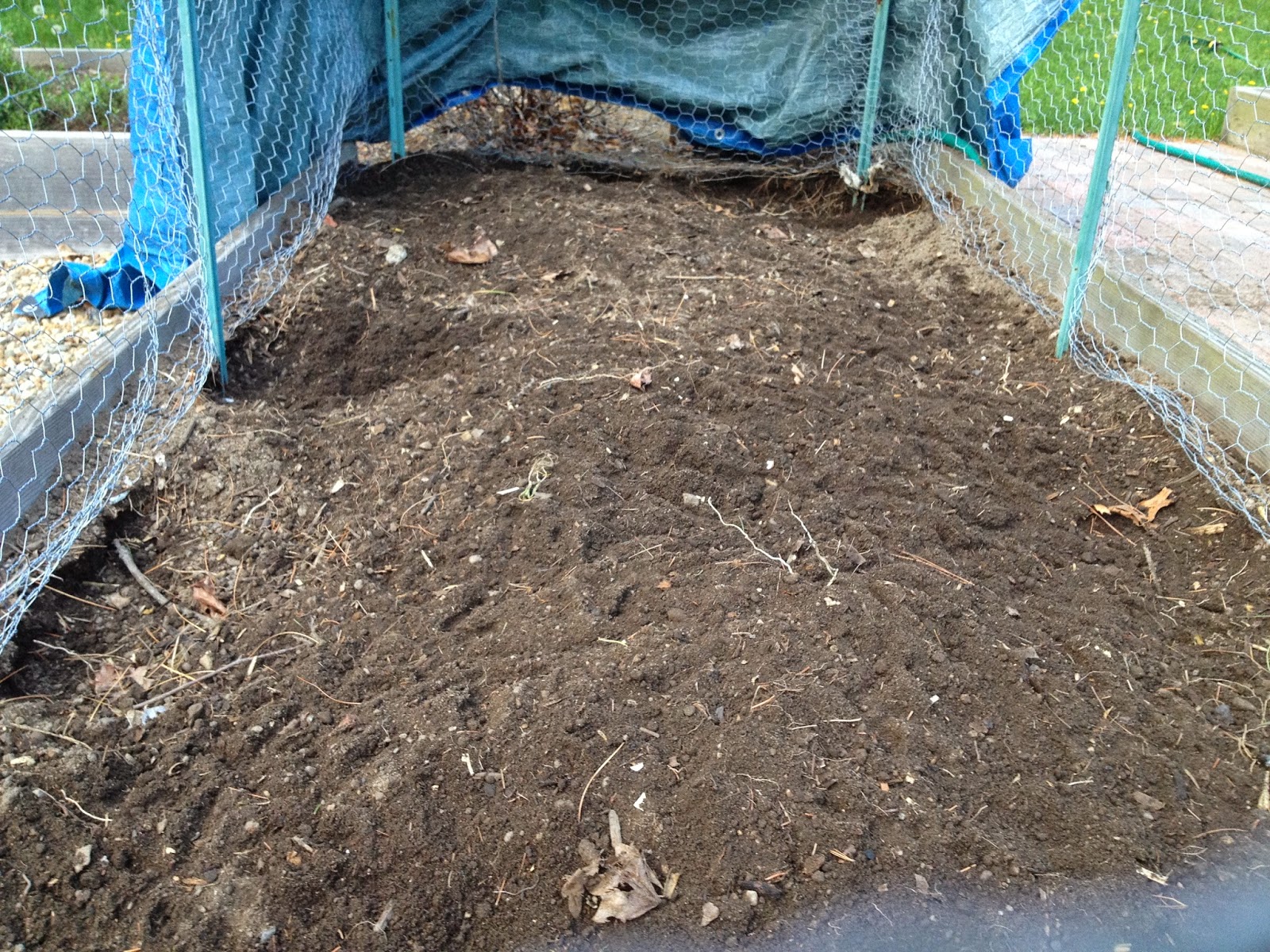Of Cabbages and Cutworms
Although we were very good about fencing the cabbages this year to protect them from hungry skunks and groundhogs, it turns out something else has been eating away at them:
See the way those leaves are clipped off right at the bottom? At first I wasn't sure what was going on, because of the insect damage further up the leaf, but that nibbling at the bottom is a classic sign of cutworms. We have dealt with them before, and there's just nothing more disheartening than watching your tiny transplants (especially ones you raised from seed over the winter) get mowed down overnight. Half of our winter cabbages were beyond saving:
As you can see, I suspected cutworms earlier, and used a yogurt cup with the bottom cut out as a ring around it to keep the worms at bay. That was too little, too late for this plant, though. Time to try a more drastic remedy before we lose all of the cabbages.
First, we dug up our remaining plants and temporarily moved them to an unused bed:
When I did so, I found one of the culprits — definitely a cutworm. I didn't take a picture because Kirk squashed it in rage, and the pile of guts was probably too gross to share, right? You can check out what they look like here for reference.
Next we grabbed the two closest chickens and put them to work in the now-empty cabbage bed:
This was easy to do, since we already had fencing up to keep out our furry predators. Once we dropped Dolley and Abigail in, we just put an extra piece of chicken wire over the top to protect our birdies from the hungry hawks and eagles that are just waiting for a snack. The tarp gives them a little shade as well.
While we went about the rest of our garden business, the ladies scratched and dug and ate up all the grubs, larvae, and worms they could find:
Their industrious afternoon left us with beautifully tilled soil, and should have cleared the entire area of any overwintering cutworms that might still be lurking in the dirt.
Finally (after sending the chickens back home to their regular digs), I inspected the root balls of our cabbages for any insects:
And then I transplanted them back into the bed:
Those dark compost circles mark where I planted new cabbage seeds to (eventually) replace the plants we lost. Since these are meant to be late-season cabbages anyway, I think this late sowing (and inadvertent succession planting) will probably turn out okay in the end.
But I still hate those grubby bastards.










Comments
Post a Comment